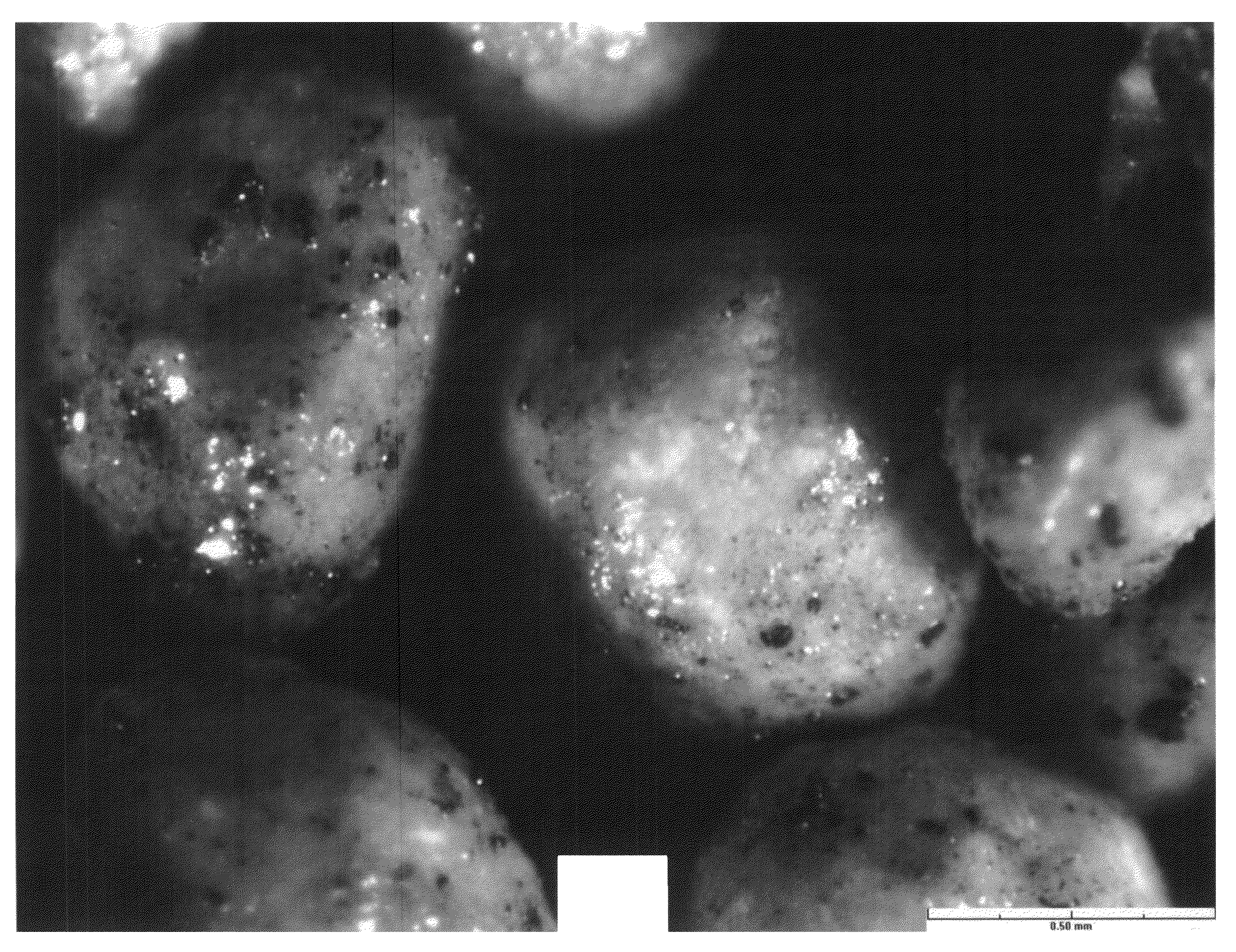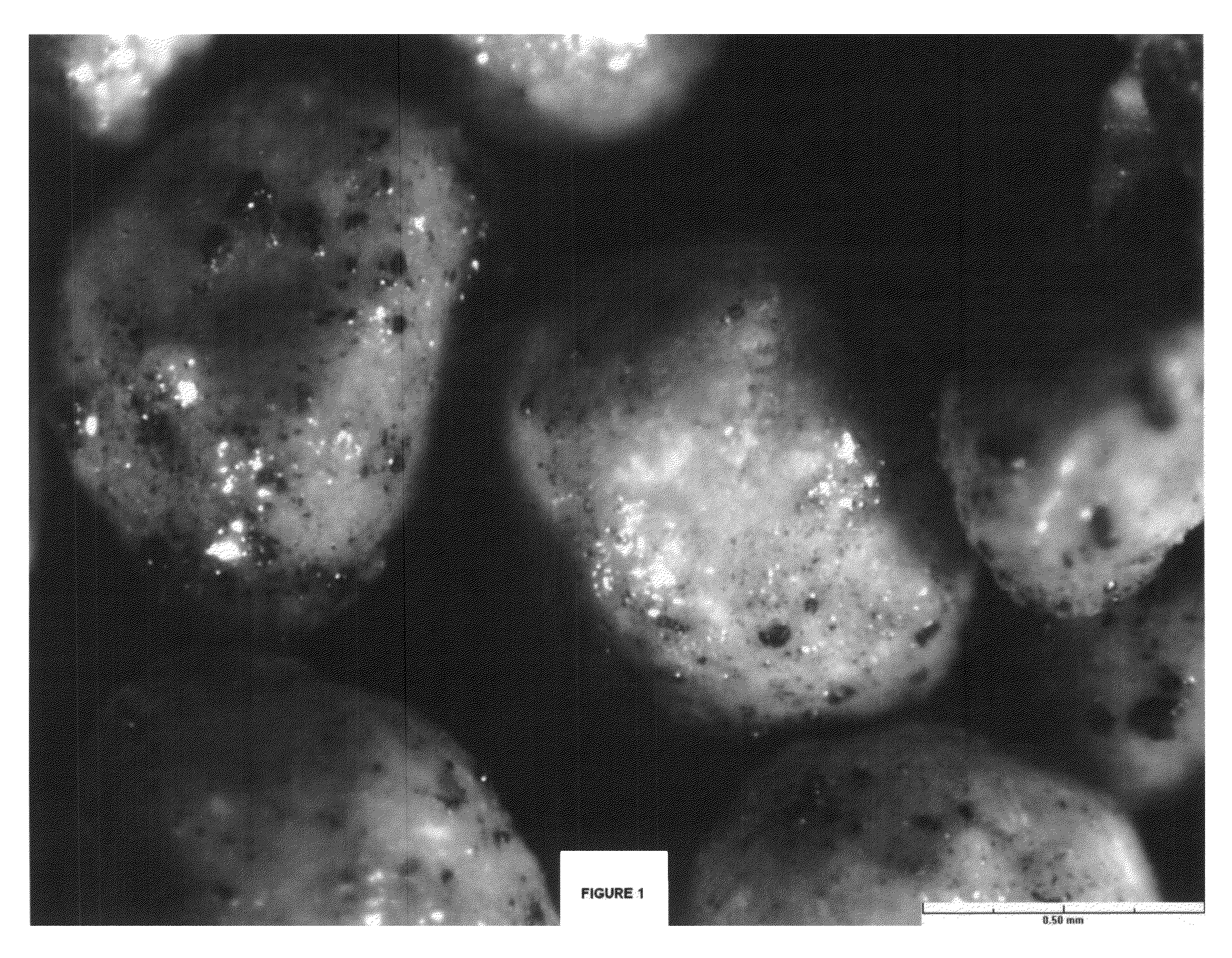Reducing flow-back in well treating materials
a flow-back and well-treatment technology, applied in the field of particle compositions, to achieve the effect of reducing cost, facilitating attachment and retention, and small particles
- Summary
- Abstract
- Description
- Claims
- Application Information
AI Technical Summary
Benefits of technology
Problems solved by technology
Method used
Image
Examples
example 1
[0048]A proppant resin having embedded magnetite particles was prepared. About 1210 grams of solid flake novolac resin (available from Georgia-Pacific as GP-2202 proppant resin) was melted at 140 to 150° C. To the molten novolac, 173 grams of powdered magnetite with an average particle size of 15 microns (15,000 nm) along with 12 grams of solvent, DBE-2 (DBE-2 is understood to contain about 20% to about 35% dimethyl adipate, about 65% to about 80% dimethyl gluterate, and up to 3% maximum of dimethyl succinate available from DuPont, Wilmington, Del.), for viscosity control. The molten mixture was formed into a thin sheet and allowed to cool. The cooled magnetite impregnated resin was broken into small pieces.
example 2
[0049]3000 grams of a proppant substrate was preheated in an oven to 450-500° F. (232-260° C.) and then added to a preheated mixer. Both standard Frac sand (20 / 40 silica sand from US Silica) and a 20 / 40 ceramic proppant from Carbo Ceramics were used as proppant substrates). When the temperature within the mixer, as measured by IR, indicated 400° F. (204° C.), 107 grams of the magnetic resin of Example 1 was added (this provided about 0.5% by weight of magnetic particles based on the weight of the proppant. After mixing for about 10 seconds, 15.8 grams of powdered hexa (hexamethylene tetramine) and 2 grams of wax were added. Then, mixing was continued for an additional two minutes and the coated proppant was then discharged and allowed to cool to room temperature. By itself, the proppants coated at the level of about 0.5 weight percent magnetite did not exhibit much magnetic cohesion, although they were attracted and were held to a magnet.
[0050]FIG. 1 is a colored photomigrograph of ...
example 3
[0051]The coated composite proppant of Example 2 was subjected to a magnetizing treatment by passing the coated proppant particles through a half inch diameter by fifteen inches long plastic pipe which was surrounded by five permanent magnets attached and equally spaced but offset 90° from one another. The coated proppant material was passed through the magnetic field established in this device several times before then being tested.
[0052]To test the resulting composite proppant for its relative cohesiveness, equal amounts of the composite proppant of this Example and a conventional novolac-coated ceramic proppant were placed on a horizontal glass plate. The plate was elevated at an angle of approximately 45° and tapped several times. The ceramic proppant coated with resin without the magnetite rolled off the plate, while the proppant having the resin coating with the adhered magnetic particles remained as a single mass on the plate, thus demonstrating the effectiveness of the magne...
PUM
| Property | Measurement | Unit |
|---|---|---|
| pressure | aaaaa | aaaaa |
| particle size | aaaaa | aaaaa |
| particle size | aaaaa | aaaaa |
Abstract
Description
Claims
Application Information
 Login to View More
Login to View More - R&D
- Intellectual Property
- Life Sciences
- Materials
- Tech Scout
- Unparalleled Data Quality
- Higher Quality Content
- 60% Fewer Hallucinations
Browse by: Latest US Patents, China's latest patents, Technical Efficacy Thesaurus, Application Domain, Technology Topic, Popular Technical Reports.
© 2025 PatSnap. All rights reserved.Legal|Privacy policy|Modern Slavery Act Transparency Statement|Sitemap|About US| Contact US: help@patsnap.com


